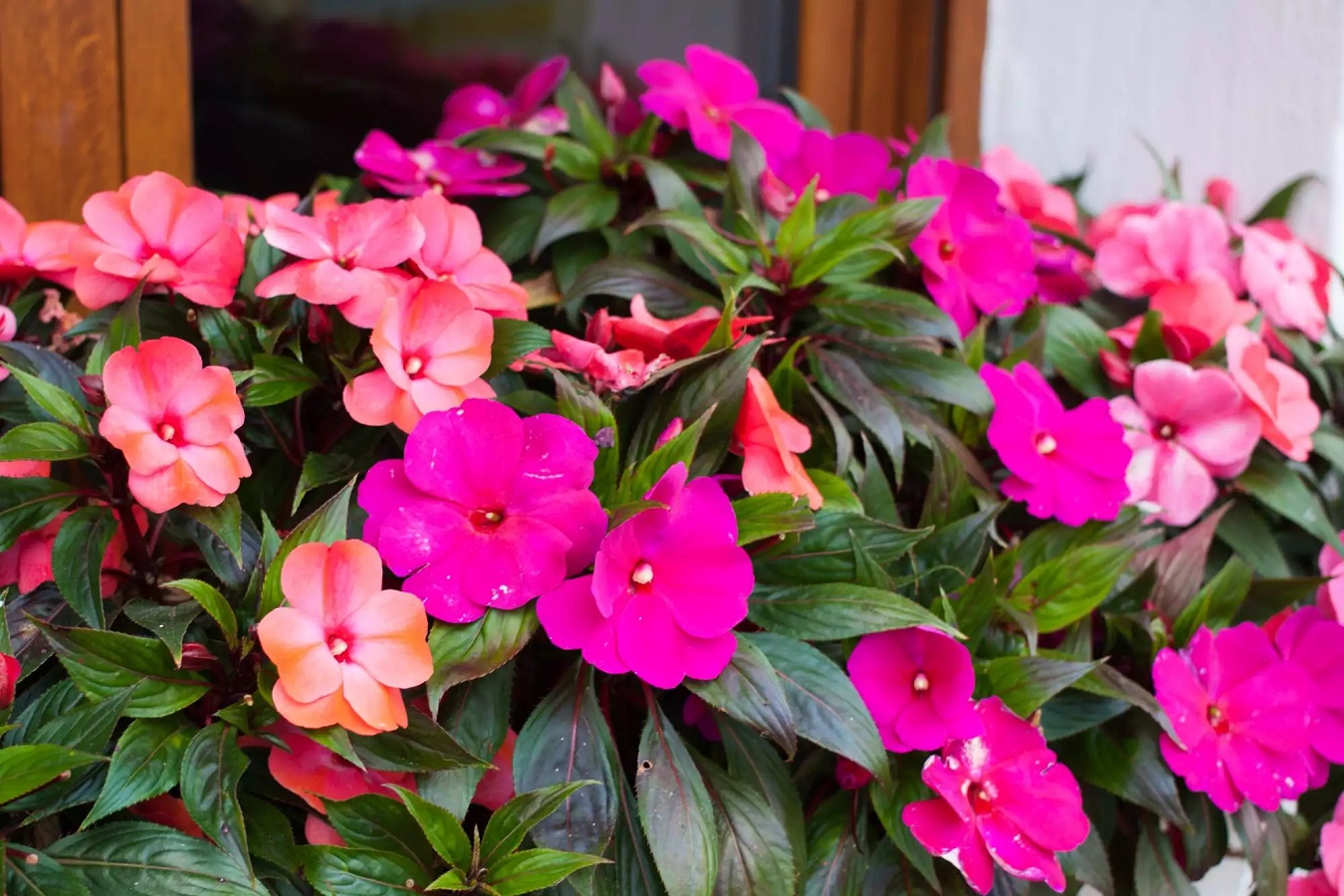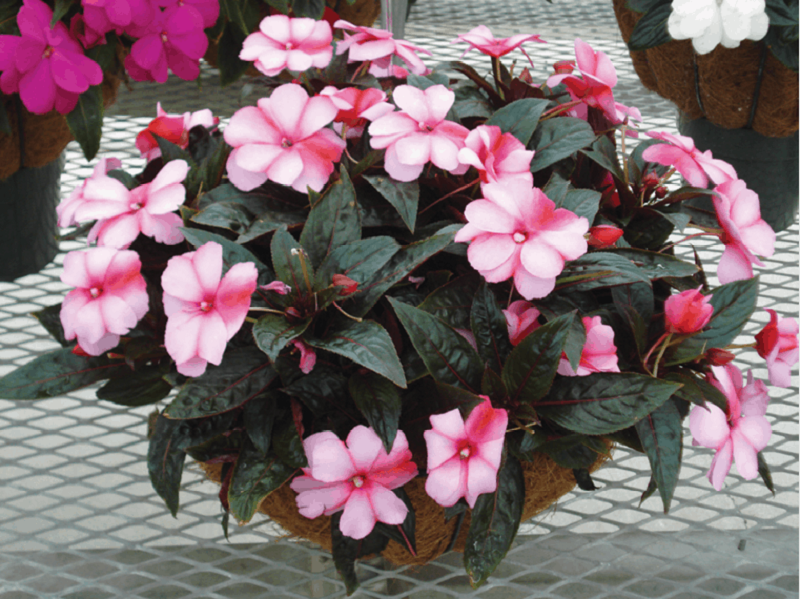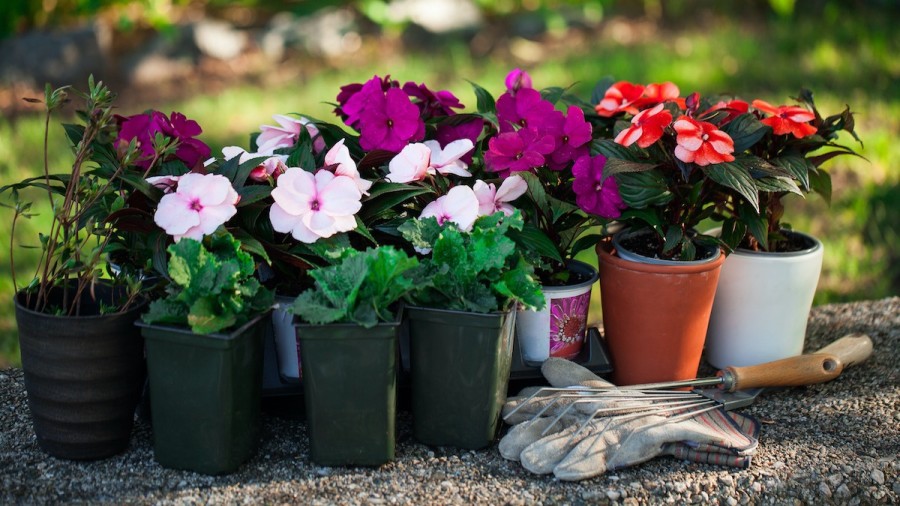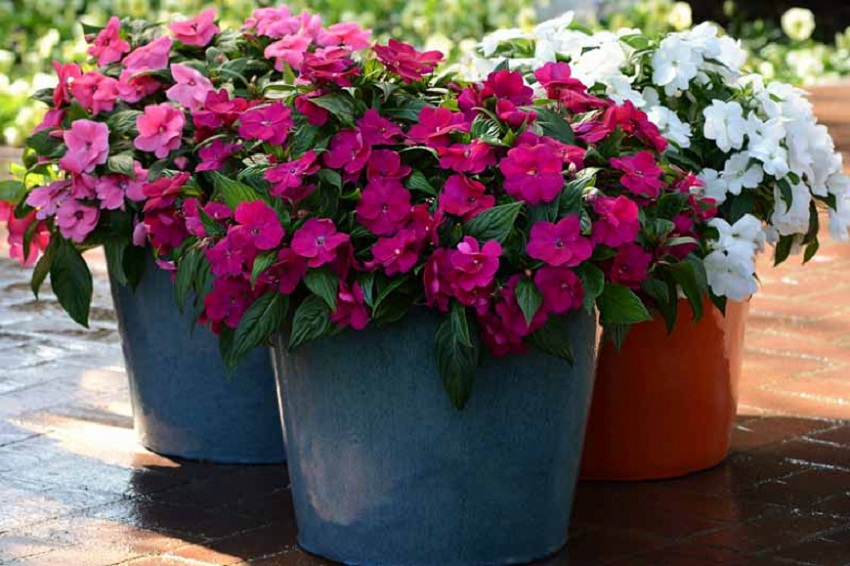Impatiens Care Guide - Varieties, Colors, Requirements of the Plant
Impatiens is one of the most popular plants appearing in gardens. It doesn't require too much attention, and with good care, it develops a lot of bright, colorful flowers. It likes half-shade and fertile, humus-rich soil. Check the popular varieties of impatiens flowers and learn what you should know about it.

Impatiens - what kind of plant is it?
Impatiens, also known as busy Lizzie in some regions, is a perennial plant. It’s classified as a balsam plant - belonging to the group of Balsaminaceae. Although it is popular in Europe and America, it originates in Asia and Africa, where it grows naturally. This plant can be characterized by its low requirements and beautiful looks.

The most important needs of an impatiens plant
Impatiens love growing in shade and half-shade. Remember about it regardless whether you grow impatiens indoors or on a balcony or patio. It’s important, as too intense sunlight damages the plant.
The soil preferred by most varieties of impatiens is fertile and permeable. It’s not really a problem for plants grown indoors or on balconies, as one has to purchase a potting mix for them anyway. You can use e.g. a mix dedicated for balcony plants. It’s a bit more difficult if you want to plant impatiens in a flowerbed in your garden. If you think the soil is unsuitable for this species, dig up the spot and add some appropriate potting mix. This way, you can create perfect growing conditions for impatiens.
Busy Lizzie plant loves growing in moist ground, so make sure to water the plant regularly. It’s particularly essential in gardens during a drought. The plant will surely die without enough water.

Impatiens - picking a fertilizer
In reality, busy Lizzies do not need feeding. The plant can manage on its own. But if you want particularly rich impatiens flowers during the blooming season - you can strengthen the plant from time to time. Bloom liquid fertilizers for balcony plants are highly recommended, as well as universal elixirs for green and ornamental plants.
When to plant impatiens plant?
When grown indoors, busy Lizzie grows perfectly well the whole year round. For this reason, it doesn’t matter when you put the plant in a container. It’s quite different if you want to plant impatiens in the garden. In such a case, pick a date when there’s no risk of frosts. Impatiens are typically planted in the ground at the beginning of May.
Impatiens - popular varieties
There are many varieties of impatiens plants. That’s why you should pick the most interesting ones for your house or garden. Consider the following types of impatiens:
- impatiens walleriana - Impatiens walleriana (Blackberry Ice, Elfin, Victorian Rose)
- Kashmir balsam - Impatiens balfourii
- Impatiens scabrida - Impatiens scabrida
- Garden balsam - Impatiens balsamina
- Ceylon balsam - Impatiens repens
- New Guinea impatiens - Impatiens hawkeri
- hybrid varieties - Impatiens hybrid

How to grow impatiens - propagation
Grafting is the most common method of impatiens propagation. Spring is the best time for it - this way, the plants have enough time to develop until May. You can also purchase a seedling in a gardening shop. If you have not enough time or are afraid your attempts at grafting an impatient plant will fail - simply buy some seedlings.
Some impatiens varieties self-seed. But it’s quite a rare occurrence - so don’t rely on it.
Typical pests and diseases of impatiens plants
An impatiens grown indoors is unlikely to catch a disease or get invaded by pests. But if you keep such a plant on a balcony, or grow impatiens in flower beds, both dangers are serious and real.
As for diseases, mold is the biggest threat to impatiens. It’s easily recognizable by delicate greyish fur on the plant. To remove the mold, you can try spraying it with natural mixtures. But it’s not always an effective method. If it doesn’t work, try using chemical products.
Slugs and snails are the most dangerous pests invading impatiens. The leaves are their usual target. You can try natural remedies to eliminate them - there are plenty of effective methods out there.
How to trim impatiens?
Taking care of impatiens involves regular trimming as well, thanks to which the plant maintains the beautiful looks. It’s typically done after the plants in the garden stop blooming. The twigs should be trimmed right above the ground level. Secure the plants against low temperatures before winter.
Impatiens indoors require a different approach. You shouldn’t cut the plant before winter, as it might bloom during this time. The branches should be trimmed in early spring, by cutting off 1/4 of their length. This way, the plant can regenerate before the next blooming season.

📍 What do impatiens look like?
Impatiens is an ornamental plant which develops a lot of flowers. As for the color, impatiens are typically pink, although there are also white and purple varieties. The perennial grows wide, which makes it a perfect plant for a flowerbed, although it can be also grown in containers.
📍 Impatiens - sun or shade?
Impatiens loves full shade or half shade, along with moist ground. It cannot be exposed to full sun, as the sunlight might seriously damage the plant.
📍 How to water impatiens?
Impatiens, also known as busy Lizzie, requires regular watering. You might need to water it every day - especially during a drought, and when it grows in the garden. But make sure to control the amount of water - impatiens doesn't tolerate being overwatered.
📍 When should you plant impatiens?
Impatiens, if grown indoors, can be planted at any time during the year - the time is not important. As for impatiens grown in gardens, May is the best moment. Make sure no frosts have been forecasted. Low temperatures could damage the plant.
Featured articles




